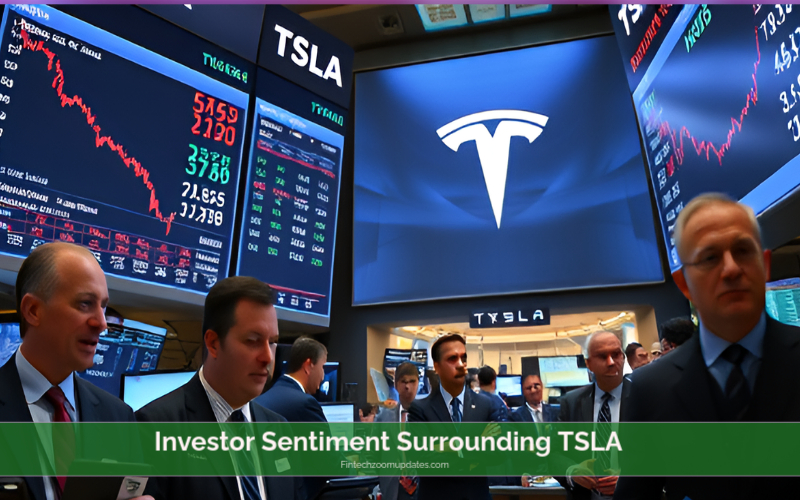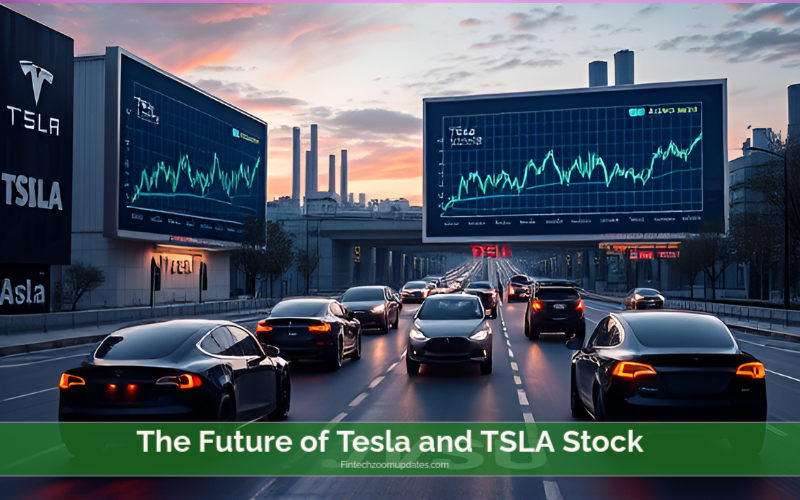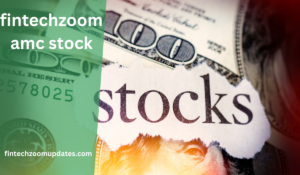Table of Contents
ToggleTable of content
- Introduction
- Overview of Fintech and TSLA
- The Financial Performance of Tesla
- Recent Developments Impacting TSLA Stock
- Market Analysis: TSLA vs. Competitors
- Trends in Electric Vehicle Market Growth
- Supply Chain Dynamics Affecting Tesla
- Upcoming Tesla Innovations
- Analyst Perspectives and Forecasts for TSLA Stock
- Historical Stock Performance Trends
- Factors Influencing Stock Volatility
- Tesla’s Regulatory Environment
- TSLA Stock Splits and Their Significance
- Investor Sentiment Surrounding TSLA
- Key Metrics for Evaluating TSLA Stock
- How Global Economic Conditions Affect TSLA
- The Role of Institutional Investors in TSLA
- The Future of Tesla and TSLA Stock
- Conclusion
- Frequently Asked Questions
Tesla, Inc. has made a massive impact in the electric vehicle (EV) and sustainable energy sectors. As a result, the growth of its stock, known as TSLA, has been nothing short of explosive. When we look at the trends surrounding fintechzoom TSLA stock, we gain valuable insights into the investing landscape. This blog will explore Tesla stock market performance, recent developments, and future forecasts, helping investors make informed decisions in a fast-paced market.
For More Details Read: Fintechzoom.Com Ftse100 : Discover Trends And Opportunities
Overview of Fintech and TSLA
The world of fintech has revolutionized how we trade stocks. By integrating technology into finance, fintech has made investing more accessible and efficient. For Tesla, this means that more investors can easily buy and sell TSLA stock. With platforms offering real-time data and analytics, investors can make quicker decisions based on market trends.
Fintech tools also provide valuable insights into Tesla’s stock performance. These innovations enhance the investor experience, making it easier to track the performance of fintechzoom TSLA stock. As technology continues to evolve, its impact on stock trading will only grow, shaping how we invest in companies like Tesla.
The Financial Performance of Tesla
Tesla’s financial metrics tell a fascinating story. Over the past few years, the company has experienced significant revenue growth. In 2023, Tesla reported a revenue increase of over 30% year-over-year, reaching approximately $81 billion. This growth is reflected in the stock price, which has seen tremendous appreciation.
Key Financial Metrics
| Metric | 2022 | 2023 |
|---|---|---|
| Revenue | $62 billion | $81 billion |
| Profit Margin | 15% | 18% |
| Earnings Per Share (EPS) | $3.22 | $4.10 |
These figures influence investor sentiment, often driving TSLA stock performance. When investors see strong financial results, they are more likely to buy shares, pushing the stock price higher.
Recent Developments Impacting TSLA Stock
Tesla has been busy lately, and that’s putting it mildly! From production milestones to new product launches, there’s a lot to unpack. For instance, the company recently announced the opening of a new Gigafactory in Texas, which is expected to double production capacity. This news sent TSLA stock soaring, as investors reacted positively to the potential for increased revenue.
Additionally, Tesla’s entry into the energy market with solar products and battery storage solutions has opened new revenue streams. These developments create ripples in stock market reactions, showcasing how Tesla is constantly innovating and adapting to market demands.
Market Analysis: TSLA vs. Competitors
Tesla is not alone in the electric vehicle market. Companies like Ford, Rivian, and Lucid Motors are all vying for market share. However, Tesla remains a leader due to its established brand, extensive charging network, and strong production capabilities.
Comparison of Key Metrics
| Company | Market Share (%) | Revenue (2023) | Stock Performance (YTD) |
|---|---|---|---|
| Tesla | 60% | $81 billion | +50% |
| Ford | 10% | $45 billion | +20% |
| Rivian | 5% | $8 billion | +15% |
These numbers show why TSLA remains a top choice for investors. The company’s competitive advantages, such as its brand loyalty and technological innovations, position it well against its competitors.
Trends in Electric Vehicle Market Growth
The electric vehicle market is booming. According to recent reports, the global EV market is projected to grow at a compound annual growth rate (CAGR) of 22% over the next five years. This growth benefits Tesla significantly, as it leads the charge in innovation and production.
Tesla’s electric vehicle sales have increased dramatically, with over 1.3 million units sold in 2023 alone. This surge in demand is a clear indicator of the company’s growth potential in the coming years.
Supply Chain Dynamics Affecting Tesla

Like many companies, Tesla faces challenges in its supply chain. The semiconductor shortage has impacted production timelines, causing some delays. However, Tesla has adapted by securing long-term contracts with suppliers, ensuring a steady flow of necessary components.
These supply chain dynamics play a crucial role in stock performance. When production is smooth, TSLA stock tends to perform well. Conversely, any hiccups in the supply chain can lead to volatility, which investors need to keep an eye on.
Upcoming Tesla Innovations
Tesla is always looking ahead. The company has plans to launch several new models, including the Cybertruck and an updated version of the Model S. These innovations are expected to drive TSLA stock growth, as new products often generate excitement among consumers and investors alike
Upcoming Innovations
| Model | Expected Release Date | Key Features |
|---|---|---|
| Cybertruck | Late 2025 | Unique design, all-electric utility |
| Model S Plaid | Already available | 0-60 mph in under 2 seconds |
| Roadster | 2025 | Supercar performance and range |
| Tesla Semi | Mid 2025 | Electric long-haul trucking solution |
As Tesla rolls out these new models, anticipation will likely influence TSLA stock positively. Investors eager for news about these releases will keep an eye on Tesla’s announcements, influencing stock trading behavior.
Analyst Perspectives and Forecasts for TSLA Stock
Analyst sentiment around TSLA stock plays a significant role in its market performance. Many analysts express optimism about Tesla’s future growth, citing its strong production capabilities, innovative engineering, and expanding market share in the EV sector.
Several experts have issued TSLA stock forecasts that reflect growth potential. For instance, some predict that TSLA could reach $1,000 per share in the next few years due to performance metrics. Others caution about stock volatility driven by market conditions, emphasizing the importance of having a balanced TSLA investment strategy.
Analyst Predictions Table
| Analyst | Price Target ($) | Rating |
|---|---|---|
| Goldman Sachs | $950 | Buy |
| Morgan Stanley | $800 | Hold |
| Bank of America | $1,000 | Buy |
These varying outlooks illustrate the uncertainty and excitement surrounding TSLA stock, as analysts weigh both the risks and rewards associated with investing in Tesla.
Historical Stock Performance Trends
Looking back at TSLA’s historical stock performance helps us understand its volatility and long-term prospects. Tesla’s stock has rallied significantly since its IPO in 2010, with key milestones like the rapid growth in 2020 and subsequent stock splits making headlines.
Historical Stock Performance Chart
| Year | Price at Start of Year ($) | Price at End of Year ($) | Annual Growth (%) |
|---|---|---|---|
| 2019 | $24 | $86 | +258% |
| 2020 | $88 | $700 | +795% |
| 2021 | $700 | $1,000 | +43% |
| 2022 | $1,000 | $120 | -88% |
| 2023 | $122 | $300 | +150% |
Understanding these trends aids investors in gauging TSLA stock’s historical resilience and recognizing the volatility that accompanies rapid growth periods.
Factors Influencing Stock Volatility
TSLA is no stranger to stock volatility, influenced by both internal and external factors. Internal factors might include production delays, changes in leadership, or shifts in marketing strategies. Conversely, external factors such as economic downturns or shifts in consumer preferences can also play a role.
For example, major announcements about the company’s production goals or updates regarding its autonomous driving capabilities tend to provoke significant market reactions. Investors need to stay alert as these instances may sway TSLA stock price dramatically.
Tesla’s Regulatory Environment
The regulatory landscape surrounding Tesla is complex but essential. Different countries have varying emissions standards and tax incentives for electric vehicles. For instance, California has stringent regulations that could either benefit or challenge Tesla depending on its ability to comply.
Tesla’s market performance often reflects how well it adapts to these regulations. Positive changes, like favorable government incentives for EV purchases, can boost TSLA stock, while negative regulations might cause stock prices to waver. Investors should closely monitor this aspect to gauge Tesla’s regulatory environment’s impact on fintechzoom TSLA stock.
TSLA Stock Splits and Their Significance
Tesla has executed several stock splits, with the most notable occurring in 2020 and 2022. These moves significantly impacted how investors perceive TSLA stock. By lowering the stock price and increasing shares available, Tesla aims to encourage more retail investors to buy.
Historically, stock splits create a psychological boost, leading to increased buying pressure. Understanding the significance of these splits can help investors develop effective TSLA investment strategies and optimize their portfolios accordingly.
Stock Split Overview
| Year | Ratio | Price Before Split ($) | Price After Split ($) |
|---|---|---|---|
| 2020 | 5-for-1 | $2,000 | $400 |
| 2022 | 3-for-1 | $900 | $300 |

Investor Sentiment Surrounding TSLA
The sentiment surrounding TSLA stock can fluctuate based on various factors, including social media trends, public perception, and the influential role of savvy investors. For example, online discussions and Twitter trends play a significant role in shaping public opinion about the company’s prospects.
Events that lead to criticism or praise of Tesla and its leadership — particularly Elon Musk — can influence stock prices. These sentiments can create short-term volatility, which is vital for investors to consider when assessing TSLA stock.
Key Metrics for Evaluating TSLA Stock
When evaluating TSLA stock, several critical metrics come into play. Investors often consider the P/E ratio, market capitalization, and earnings growth projections. These figures offer valuable insights into Tesla’s financial health and future growth potential.
For instance, a P/E ratio of 90 may seem high compared to traditional benchmarks, but for a growth company like Tesla, it can indicate strong future earnings expectations. Knowing how to interpret these metrics is essential for making informed decisions when investing in Tesla.
Key Metrics
| Metric | Value |
|---|---|
| P/E Ratio | 90 |
| Market Capitalization | $1 trillion |
| Revenue Growth Rate | 30% |
These metrics serve as tools for investors to assess TSLA stock and shape their TSLA stock evaluation strategies.
How Global Economic Conditions Affect TSLA
The broader economic landscape significantly influences TSLA stock performance. Factors such as inflation, interest rates, and global supply chain issues can create volatility in stock prices. For example, if interest rates rise, funding costs for new projects increase, potentially slowing down Tesla’s growth.
In response to rising inflation, consumers may reconsider higher-priced electric vehicles, impacting sales and, consequently, the stock’s performance. Consequently, keeping an eye on economic indicators is crucial for investors tracking the fintechzoom TSLA stock.
The Role of Institutional Investors in TSLA
Institutional investors play a significant role in the stock market and have considerable influence over TSLA stock stability. With firms managing large portfolios, their buying or selling actions can lead to sharp shifts in stock prices.
As of 2023, approximately 75% of Tesla’s shares are held by institutional investors. Their strategies often revolve around long-term growth. Consequently, trends and movements among these large investors can reflect overall market sentiment towards TSLA stock. Monitoring these institutional investments is critical for understanding stock price dynamics.

The Future of Tesla and TSLA Stock
Looking ahead, Tesla aims to diversify further and enhance its market position within the EV sector and beyond. Strategic initiatives, such as expanding its manufacturing footprint and investing in battery technology, promise to propel growth.
With forecasts predicting continual demand for electric vehicles, Tesla’s growth potential remains strong. Investors should keep an eye on Tesla’s announcements regarding new projects and initiatives impacting the fintechzoom TSLA stock.
Conclusion
In this blog, we’ve explored the explosive growth of fintechzoom TSLA stock trends and how various factors affect Tesla’s stock performance. By understanding Tesla’s financial performance, market analysis, and key metrics, investors can make informed decisions in this exciting market landscape.
Staying informed reflects our commitment as investors, especially with the dynamic nature of the electric vehicle industry. Knowledge of these trends and developments lays the foundation for successful investing in TSLA stock.
Frequently Asked Questions
Who owns most of Tesla stock?
Elon Musk is the largest shareholder of Tesla, owning around 15% of the company, giving him substantial influence over its operations and strategic direction.
Why did TSLA fall?
TSLA stock has experienced fluctuations due to various factors, including broader market volatility, production issues, and investor reactions to earnings reports or company announcements.
Who is selling TSLA?
Institutional investors often adjust their positions based on market conditions and financial performance, leading to sales of TSLA stock by various funds and investors.
Is Tesla stock expected to rise?
Analysts remain divided on TSLA’s future. Some forecast growth due to production capacity increases and market demand, while others express concern over competition and economic headwinds.
Does Warren Buffett own Tesla stock?
No, Warren Buffett does not own Tesla stock. His investment strategy typically focuses on companies with strong fundamentals, and he hasn’t invested in the electric vehicle market.
What if I invested $1,000 in Tesla 10 years ago?
An investment of $1,000 in Tesla a decade ago would have seen substantial growth, as TSLA stock has increased significantly since then, providing tremendous returns.
Is Gigafactory owned by Tesla?
Yes, Tesla owns and operates Gigafactories, which are large production facilities for batteries, electric vehicles, and energy products.
What is the symbol of Tesla?
Tesla’s stock symbol is TSLA, and it trades on the NASDAQ stock exchange.
What is the name of Elon Musk’s AI stock?
Elon Musk’s AI company, xAI, is not publicly traded. However, Tesla (TSLA) is heavily involved in AI and autonomous driving.
Is xAI a meme coin?
No, xAI is an artificial intelligence company. Some cryptocurrencies use the name “xAI,” but they are not affiliated with Musk’s company.
What is the best AI stock to buy?
Some of the top AI stocks include Nvidia (NVDA), Alphabet (GOOGL), Microsoft (MSFT), Tesla (TSLA), and Palantir (PLTR), depending on market trends.
Who is Tesla’s competitor?
Tesla’s competitors include BYD, Rivian, Lucid Motors, Ford, General Motors, Volkswagen, and Nio in the electric vehicle market.
Is Tesla profitable?
Yes, Tesla has been profitable in recent years, with strong earnings from vehicle sales, software, and energy products, though profits fluctuate.
Is Tesla owned by China?
No, Tesla is an American company headquartered in Austin, Texas, but it operates a Gigafactory in Shanghai that is fully owned by Tesla.
Who is the CEO of Tesla?
Elon Musk is the CEO of Tesla and has led the company since 2008.
What does Tesla stand for?
Tesla is named after Nikola Tesla, the inventor known for advancements in alternating current (AC) electricity.
How expensive is a Tesla?
Tesla prices range from around $38,990 (Model 3) to $79,990+ (Model X), depending on the model, features, and upgrades.




















